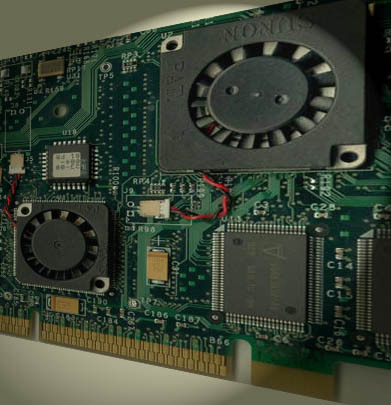Professional Affair: OpenGL Graphics Cards Compete
Introduction
Today's mainstream graphics card market is dominated by products containing Nvidia's GeForce chip, the TNT2 Ultra, the G400 series from Matrox and ATI's Rage 128 cards. In our last 3D graphics test we left out one topic: What is actually going on in the OpenGL workstation area?
Professional graphics artists or engineers use hardly any of the graphics chips mentioned above. And this situation is not really improving because of poor support, insufficient driver support for high-end applications and missing functionality. One reason for the poor support are the steadily dwindling profit margins in the last three years. High volumes are the only way to profitability for manufacturers in the mainstream segment. Long gone are the times when workstation PCs sold for 50 000 US-$. This price erosion did not stop at professional OpenGL cards. Currently the 'sweet spot' is just below 1000 Dollars. Granted, there are still very expensive OpenGL computing monsters out there, but the number of shipped products over 1000 Dollars is relatively small.
Today's 'sweet spot customers' demand decent performance, stability for many applications, and of course better support than it is usually the case for mainstream cards. In the following comparison we tested five OpenGL cards for less than 1000 Dollars. Initially we were surprised when only the Diamond Fire GL 1 Pro, Evans & Sutherland Lightning 1200, Elsa Gloria II and 3Dlabs Oxygen GVX1 fitted in this price category we selected. 3Dlabs asked us to also test the GVX210 that at almost 2000 Dollars is far above our specification. However, because of its interesting features we decided to include it in our test nevertheless.
Get Tom's Hardware's best news and in-depth reviews, straight to your inbox.

